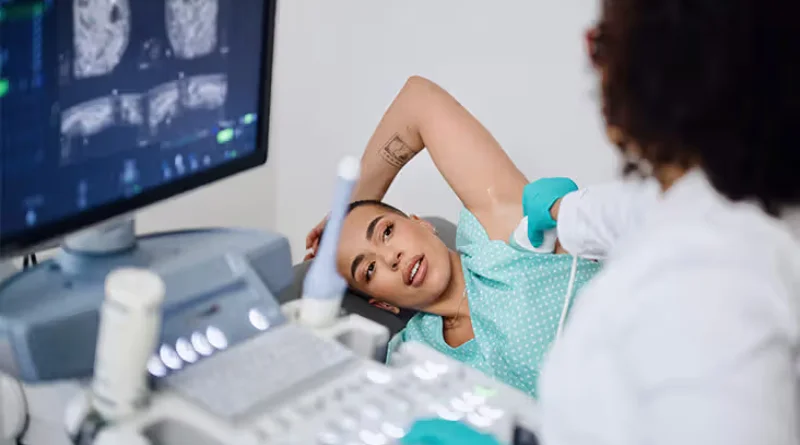What Is Ductal Breast Cancer? A Closer Look at the Condition”
What Is Ductal Breast Cancer?
Ductal breast cancer starts in your milk conduits. It incorporates obtrusive ductal carcinoma (IDC) and ductal carcinoma in situ (DCIS).
Ductal breast cancer is the most widely recognized sort of breast cancer, and breast cancer is the most well-known type of cancer in the US. Roughly 297,790 peopleTrusted Source in the US will get a breast cancer conclusion in 2023. Given information from 2017 to 2019, around 13%Trusted Wellspring of ladies will be determined to have female breast cancer during their lifetime.
Even though breast cancer commonly influences cisgender ladies and others to allow females to enter the world, it’s likewise workable for individuals appointed male upon entering the world to foster breast cancer. Ductal breast cancer makes up most instances of male breast cancer, as indicated by the Communities for Infectious Prevention (CDC)Trusted Source.
You’ll see that the language used to share details and different information focuses is twofold, fluctuating between the utilization of “male” and “female” or “men” and “ladies.” Although we normally keep away from language like this, explicitness is key while covering research members and clinical discoveries.
Sadly, the examinations and studies referred to in this article didn’t report information on, or incorporate, members who were transsexual, nonbinary, orientation nonconforming, genderqueer, agender, or genderless.
Are there different types of ductal breast cancer?
There are two main types:
- Intrusive ductal carcinoma (IDC): This sort of cancer makes up around 70-80%Trusted Wellspring of all breast cancer analyzed. It starts in the milk pipes and spreads to the encompassing tissues.
- Ductal carcinoma in situ (DCIS): DCIS is viewed as a beginning phase of cancer, harmless cancer, or pre-cancer, as it hasn’t yet begun to spread into the remainder of the breast tissue. DCIS may ultimately prompt IDC.
What symptoms are associated with ductal breast cancer?

Symptoms may include:
- A little irregularity in the breast
- Areola withdrawal
- Areola release that isn’t breast milk
- Peau d’orange (orange strip-like skin on your breast)
- Tenacious breast or areola torment
- layered skin on your areola or breast
- Skin disturbance
- Enlarging your breast
- Thickening of the skin on your breast
It means a lot to take note that the vast majority with ductal breast cancer experience no side effects. This is particularly valid for DCIS. Customary breast cancer screenings can help identify ductal breast cancer in its beginning phases.
Most breast side effects or changes aren’t brought about by cancer. In any case, if you truly do see any surprising side effects, it’s ideal to have a meeting with a medical care professional to check for strange cells.
What causes ductal breast cancer and who’s most at risk?
Similarly, as with different types of cancer, it’s not altogether clear why certain individuals create ductal breast cancer, and some don’t.
Nonetheless, specialists have recognized that specific gatherings are bound to foster breast cancer more than others.
Risk factors for ductal breast cancer include:
- Mature: As you progress in years, your gamble of creating breast cancer increases Source.
- Liquor use: Regular drinking or liquor use jumble raises your riskTrusted Source.
- Certain conceptive elements: Individuals are more likely to foster breast cancer on the off chance that they started discharging before the age of 12, began menopause after 55, have never conveyed a pregnancy to term, or conceived an offspring at a more established age.
- Thick breast tissue: Certain individuals normally have thick breast tissue. This can increase your gamble of breast cancer and make mammograms harder to peruse.
- Family background of breast cancer: You might be more likely to trust a Source to foster breast cancer if a nearby female relative has had it. In any case, a great many people who foster it have no family background in the illness.
- Qualities: On the off chance that you have specific quality changes, for example, BRCA1 and BRCA2, you’re more likely trusted Source to foster breast cancer than individuals who don’t.
- History of breast cancer: If you’ve had breast cancer previously, you might foster it once more, potentially in your other breast or an alternate region of your breast.
- Chemical treatment: Postmenopausal estrogen and progesterone meds may increase your gamble of breast cancer. Transsexual ladies might be more likely to foster breast cancer than cisgender men, perhaps because of chemical therapy.
- Smoking tobacco: There’s a connection between smoking tobacco and breast cancer. Openness to handed-down cigarette smoke may alsoTrusted Source increment your gamble.
If you figure you might be in danger of developing breast cancer, talk with a medical services professional. They can exhort you on how frequently you ought to get a mammogram too as a way of life transforms you can make to assist with decreasing your general gamble.
How is ductal breast cancer diagnosed?
A healthcare professional will typically perform several tests to identify and diagnose ductal breast cancer.
This includes:
- Actual test: Your primary care physician will physically inspect your breast for protuberances or thickening.
- Mammogram: A mammogram is an X-beam of your breast that can identify cancer.
- Biopsy: Your primary care physician will send an example of your breast tissue to a lab to be inspected. A breast biopsy can help decide whether a knot in your breast is cancerous or harmless.
- Ultrasound: A breast ultrasound utilizes sound waves to give a point-by-point perspective on breast tissue and the bloodstream. It doesn’t utilize radiation and is ok for individuals who are pregnant.
- Attractive reverberation imaging (X-ray): X-rays can distinguish little breast sores. Specialists use breast X-rays to screen individuals with a high gamble of developing breast cancer.
The next step is to determine the stage of the cancer:

- Stage 0: There are unusual cells in your channels, however they aren’t spreading yet. DCIS is viewed as stage 0.
- Stage 1: The cancer is just in your breast, with a growth of 2 centimeters (cm) or 0.75 inches (in) or less in measurement.
- Stage 2: The cancer has spread to local lymph hubs, or the growth is 2-5 cm (0.75-2 in) in measurement.
- Stage 3: The cancer has spread broadly in your breast, encompassing tissues, and lymph hubs, yet no further.
- Stage 4: The cancer has metastasized, meaning it’s spread to additional far-off destinations in your body.
If a medical care proficient has determined you to have DCIS, they might grade it. This evaluating framework is utilized to rate the probability of your DCIS returning after treatment:
- High-grade, atomic grade 3, or high mitotic rate: DCIS has a higher probability of growing again after treatment.
- Transitional grade, atomic grade 2, or moderate mitotic rate: DCIS is more averse to return after treatment.
- Poor quality, atomic grade 1, or low mitotic rate: This grade of DCIS is the most drastically averse to return after treatment.
How is ductal breast cancer treated?
An oncologist, a specialist who has some expertise in cancer, will suggest a therapy plan given:
- the sort of cancer you have
- the stage and grade of the cancer
- your particular wellbeing needs
Ductal breast cancer treatments include:
- Medical procedure: This can incorporate a lumpectomy, which jelly however much of your breast as could be expected while eliminating the unusual cells and encompassing tissues, or a mastectomy, which eliminates however much breast tissue as could be expected.
- Radiation treatment: This treatment utilizes high-energy bars to harm the DNA of unusual and cancerous cells.
- Hormonal treatment: Your clinician could recommend hormonal treatments assuming cancer cells are filling in light of estrogen and progesterone.
- Chemotherapy: You typically wouldn’t require chemotherapy for DCIS, however, it’s frequently utilized for IDC after a lumpectomy or mastectomy. It can diminish the probability of cancer spreading.
- Designated treatment: This therapy hinders the spread of atomic targets related to cancer.
- Immunotherapy: This treatment sets off your safe framework to obliterate cancer cells.
What’s the standpoint for somebody with ductal breast cancer?
Your viewpoint relies upon many variables, including the phase of analysis.
The 5-year relative endurance rate for breast cancer is around 90.8%. Trusted Source. This is normal across all breast cancer subtypes and stages. Limited breast cancer (that is, cancer hasn’t spread past the breast tissue) has a 99.3% Trusted Source 5-year relative endurance rate. The rate drops to 86.3% Trusted Hotspot for regionalized breast cancer and 31% Trusted Hotspot for breast cancer that has spread to far-off pieces of the body.
DCIS, which is stage 0 ductal breast cancer, has a 100% trusted Source 5-year endurance rate. A recent report, which took a gander at 100,000 ladies more than 20 years, found that just 3.3% percent trusted Wellspring of ladies treated for DCIS later passed on from breast cancer.
The endurance rate for breast cancer has consistently expanded over the long run, part of the way due to fresher and more successful therapies.
“As we conclude this mrprecious journey, immerse yourself in the latest Mr precious wonders across tech, Gemstones, sports, Cars, Quotes, and health. From groundbreaking tech trends to captivating, thrilling sports moments, and essential health insights, Mr preciousis your ultimate destination. So, until our next Mr precious update, stay mrprecious. Stay engaged, and keep thriving in the dynamic world of Mr precious Innovations!”

